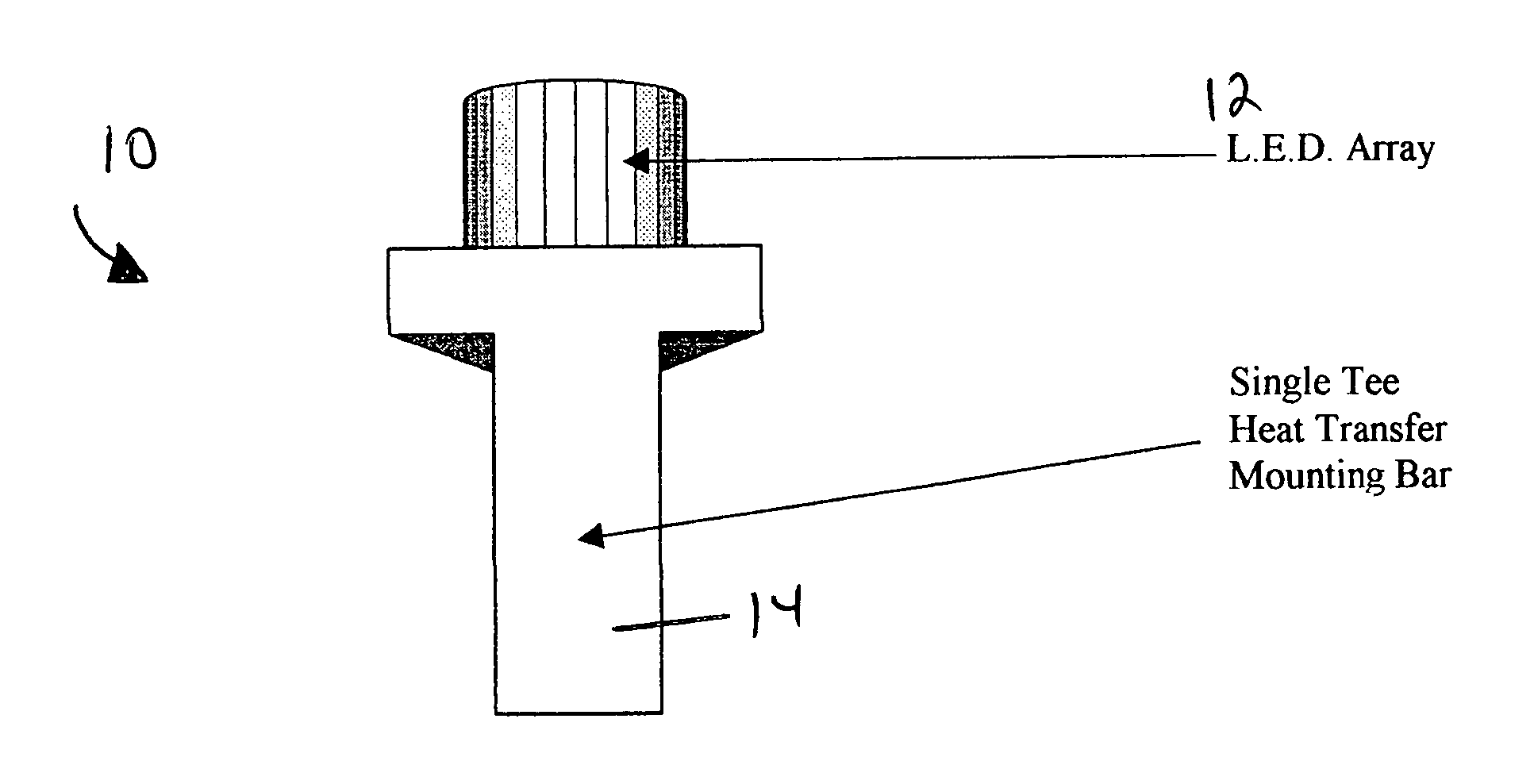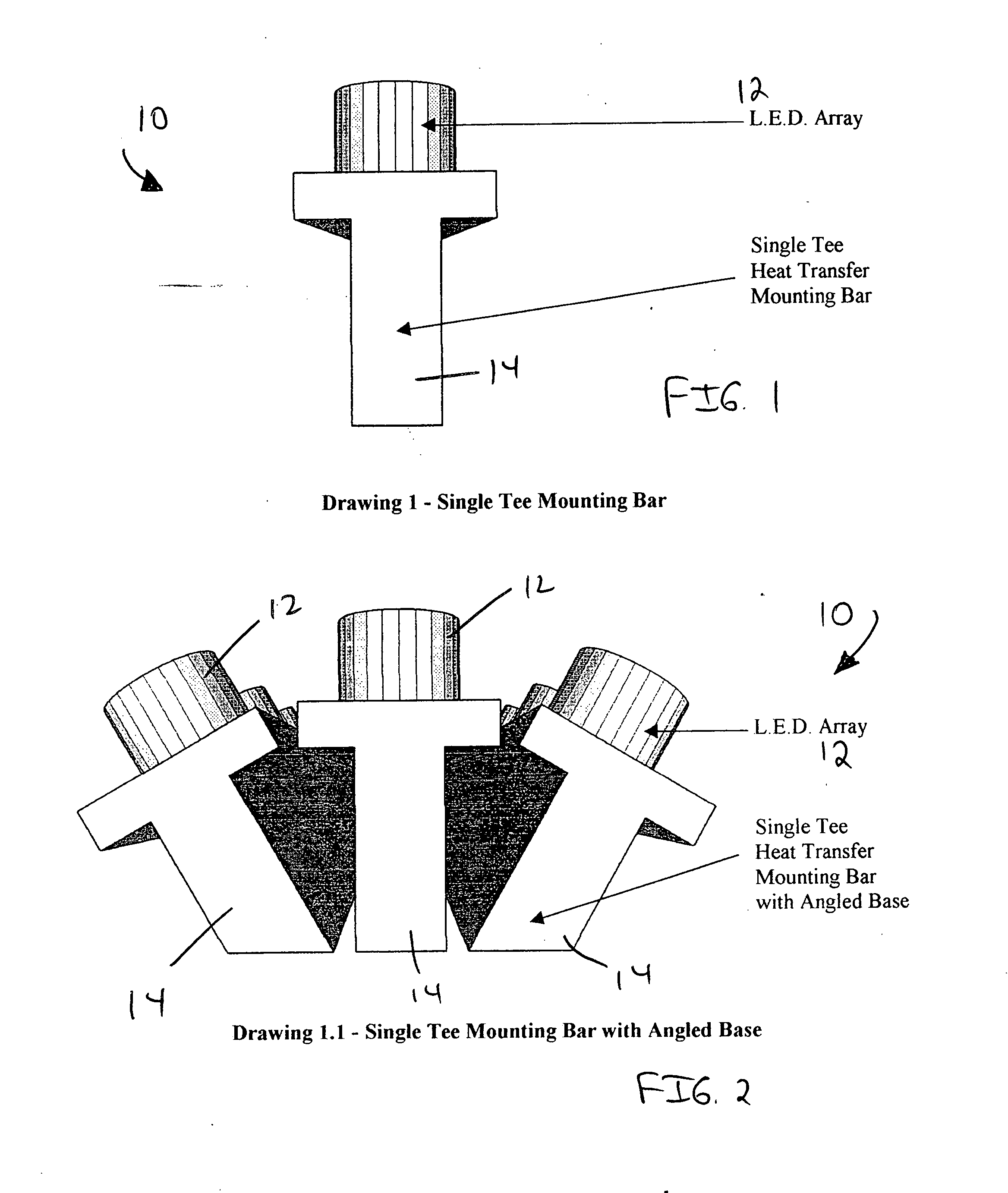Light emitting diode (L.E.D.) lighting fixtures with emergency back-up and scotopic enhancement
a technology of light-emitting diodes and lighting fixtures, which is applied in the manufacture of electric discharge tubes/lamps, lighting and heating apparatuses with built-in power, etc., can solve the problems of multiple shadows, increased number of fatal shocks, and inability to completely handle the changes in luminance necessary for efficient visual function.
- Summary
- Abstract
- Description
- Claims
- Application Information
AI Technical Summary
Benefits of technology
Problems solved by technology
Method used
Image
Examples
Embodiment Construction
[0042] As illustrated in FIGS. 1-24, the present invention is an L.E.D. (Light Emitting Diode) lighting fixture, indicated generally at 10, for use as an alternative light source capable of replacing typical fluorescent and incandescent fixtures. L.E.D.'s inherently emit either a direct highly concentrated beam spread or a diffuse light with extremely low lumens. The L.E.D. array lighting fixture 10 of the present invention is configured so that the lighting fixture 10 emits a dispersed wide beam spread similar to the output of existing fluorescent and incandescent fixtures.
[0043] The L.E.D. lighting fixture 10 of the present invention configures arrays of L.E.D.'s 12 for spreading light evenly and more closely matching the footcandle output and footcandle spread for a full 180-degrees or a modified beam spread as required for each application. The L.E.D. lighting fixture 10 of the present invention can be used as temporary or permanent lighting.
[0044] The use of scotopic / photopic...
PUM
 Login to View More
Login to View More Abstract
Description
Claims
Application Information
 Login to View More
Login to View More - R&D
- Intellectual Property
- Life Sciences
- Materials
- Tech Scout
- Unparalleled Data Quality
- Higher Quality Content
- 60% Fewer Hallucinations
Browse by: Latest US Patents, China's latest patents, Technical Efficacy Thesaurus, Application Domain, Technology Topic, Popular Technical Reports.
© 2025 PatSnap. All rights reserved.Legal|Privacy policy|Modern Slavery Act Transparency Statement|Sitemap|About US| Contact US: help@patsnap.com



